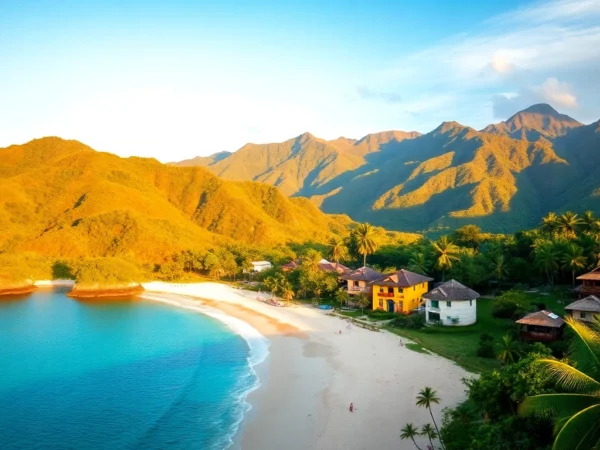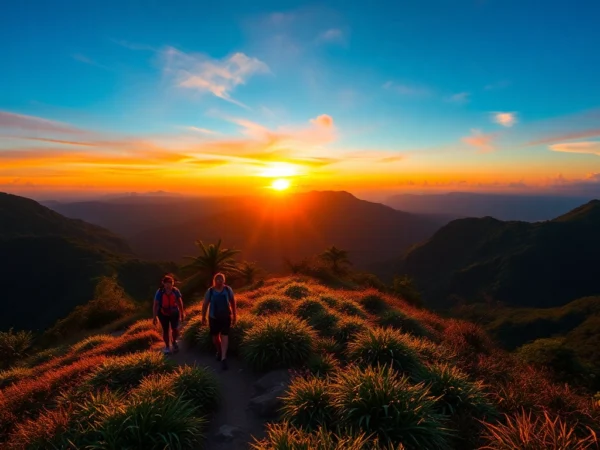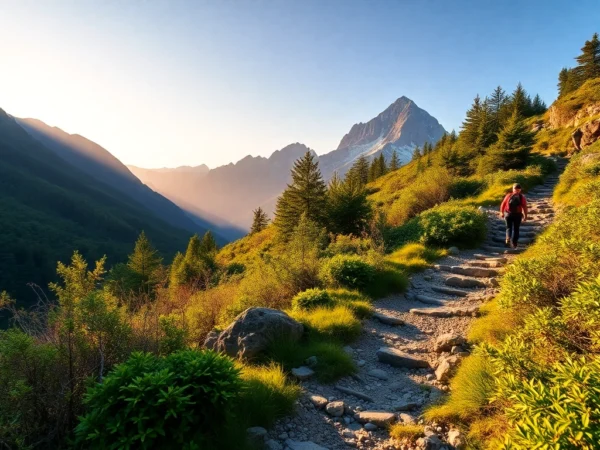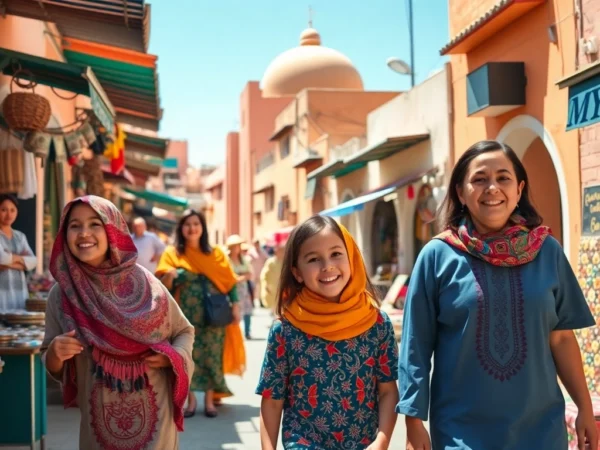Lombok: Discover Indonesia’s Scenic Island with Rich Culture and Natural Wonders
Introduction to Lombok: Indonesia’s Hidden Paradise
Nestled in the heart of Southeast Asia, Lombok is an enchanting island that offers an alluring blend of natural beauty, rich culture, and adventurous pursuits. While often overshadowed by its neighboring island, Bali, Lombok boasts a distinct charm that captivates travelers seeking an authentic Indonesian experience away from crowded tourist spots. With pristine beaches, towering volcanoes, vibrant local traditions, and breathtaking landscapes, this island is truly a microcosm of Indonesia’s diverse heritage and natural marvels. As one explores Lombok, it becomes apparent why this island is increasingly recognized as an exceptional destination for travelers who crave both adventure and cultural immersion.
For those interested in exploring further, comprehensive travel information and insights can be found on Lombok—your gateway to discovering the island’s hidden treasures.
Geographical Overview and Key Features
Lombok is part of the Lesser Sunda Islands chain, situated in the West Nusa Tenggara province of Indonesia. Covering an area of approximately 4,738 square kilometers, the island sits just east of Bali, separated by the Lombok Strait—an essential waterway that connects the Bali Sea with the Indian Ocean. Its diverse topography includes volcanic mountains, lush rainforests, and expansive coastlines, making it a geographic tapestry that appeals to nature lovers and outdoor enthusiasts alike.
Central to Lombok’s identity is Gunung Rinjani, Indonesia’s second highest volcano, towering at 3,726 meters. This active volcano dominates the northern skyline and forms part of the Rinjani National Park, which encompasses lakes, waterfalls, and fertile agricultural lands. The island’s southern coast features idyllic beaches with white sands and crystal-clear waters, perfect for relaxation or water sports.
Lombok’s climate is tropical, characterized by distinct wet and dry seasons. The dry season, from May to September, offers ideal conditions for outdoor activities, lush landscapes, and sunny beach days. Humidity and rainfall peak during the monsoon months from November to March, which can influence travel planning but also enrich the island’s ecosystems.
Historical Background and Cultural Roots
The history of Lombok is deeply intertwined with the cultural tapestry of the Sasak people, the predominant ethnic group residing on the island. Historically, Lombok was a significant center for trade, and its strategic position within the archipelago contributed to its diversity of influences, including Hindu, Buddhist, and later Islamic elements. Evidence of these historical layers can be seen in ancient sites, traditional crafts, and local architecture.
The arrival of Islam in the 17th century marked a turning point, shaping the island into a predominantly Muslim community today. Despite outside influences over centuries, the Sasak community has preserved a rich cultural heritage, including unique weaving techniques, traditional music, and ancestral ceremonies. These cultural practices are not only vital to local identity but also serve as a major attraction for visitors seeking authentic experiences.
Understanding Lombok’s history offers valuable insights into its contemporary customs and social structures, making it an essential part of any comprehensive travel or cultural exploration of the island.
Why Lombok Stands Out in Indonesia
Unlike other Indonesian islands, Lombok offers a compelling combination of untouched natural beauty, indigenous culture, and fewer crowds, which enhances its appeal as a premier eco and cultural tourism destination. Its towering volcano, ethnically unique communities, and pristine beaches provide a stark contrast to more developed tourism hubs.
The island’s commitment to preserving natural and cultural heritages, alongside sustainable tourism practices, sets it apart. Moreover, Lombok’s affordability, growing infrastructure, and friendly local communities make it accessible and welcoming for international visitors, whether they seek adventure, relaxation, or cultural discovery.
In addition, Lombok’s proximity to the Gili Islands—world-renowned for their marine biodiversity and vibrant nightlife—adds an extra dimension of appeal. This integration of land-based culture and marine exploration positions Lombok as a holistic destination for diverse travel interests.
Top Attractions and Natural Landmarks in Lombok
Gunung Rinjani: Indonesia’s Second Highest Volcano
Dominating Lombok’s landscape is Gunung Rinjani, an iconic stratovolcano and a favorite among trekkers and adventure seekers. The Rinjani Trek typically spans 2-4 days, leading explorers through lush forests, hot springs, and up to the crater rim with stunning views of the caldera and Lake Segara Anak. This lake, nestled within the volcano, is believed to possess mystical qualities and is a site of spiritual significance. Climbing Rinjani offers not only breathtaking vistas but also a profound sense of achievement for mountaineers at various skill levels.
The region around Rinjani is protected as part of the national park, which aims to conserve diverse flora and fauna, including endangered species such as the Javan hawk-eagle. Proper preparation, guided tours, and respecting local regulations are vital for a safe and environmentally responsible ascent.
Pristine Beaches and Gili Islands for Water Activities
Lombok boasts some of Indonesia’s most pristine beaches, with soft white sands and clear turquoise waters. Senggigi Beach, located on the island’s west coast, offers serene sunsets and vibrant nightlife. Meanwhile, the Gili trio—Gili Trawangan, Gili Air, and Gili Meno—are world-famous for their crystal clear waters, vibrant coral reefs, and laid-back atmospheres.
These islands are ideal for snorkeling, diving, and marine exploration. Gili Trawangan, the largest and most lively, is renowned for its nightlife and water sports, while Gili Air and Meno appeal to those seeking tranquility and authentic island experiences.
Hidden Waterfalls and Scenic Hiking Trails
Beyond the volcano and beaches, Lombok’s interior is dotted with spectacular waterfalls such as Sendang Gile and Tiu Kelep in North Lombok, accessible via well-marked hiking trails. These waterfalls cascade through lush jungle landscapes and are perfect spots for swimming or picnicking. The region’s diverse trails cater to various fitness levels, offering panoramic views of rice terraces, mountains, and forests.
The scenic beauty of these natural landmarks makes Lombok a prime destination for eco-tourism and outdoor adventures, blending physical activity with immersive nature experiences.
Cultural Highlights and Local Traditions in Lombok
Traditional Sasak Villages and Crafts
Visiting Sasak villages provides an intimate glimpse into Lombok’s indigenous culture. Villages such as Sade and Sukarara are renowned for their traditional weaving, pottery, and unique architectural styles, characterized by bamboo and alang-alang roofs. Visitors can participate in weaving workshops, learn about the symbolism behind local textiles, and purchase handcrafted souvenirs.
These villages also host cultural performances that showcase Sasak music, dance, and storytelling, offering a rich connection to the island’s heritage. Supporting local artisans helps sustain these traditions amidst modernization.
Festivals and Cultural Events
Lombok’s cultural calendar is filled with vibrant festivals such as Bau Nyale, where locals hunt for sea worms believed to be the reincarnation of a princess, and the Sade Village Festival celebrating traditional arts and crafts. Islamic celebrations also shape the cultural landscape, with colorful ceremonies and processions.
Participating in these events offers tourists a deeper understanding of Lombok’s diverse spiritual and social fabric.
Local Cuisine and Culinary Highlights
The island’s cuisine reflects its cultural diversity, with dishes like ayam taliwang (spicy grilled chicken), plecing (vegetable salad with sambal and petis), and fresh seafood being staples. Warungs (local eateries) serve these authentic flavors, often with rice and sambal as accompanying elements.
Food markets, such as Pasar Mandalika, provide opportunities to savor local ingredients, taste exotic fruits, and discover unique spices used in traditional recipes. Engaging with local food culture is an essential part of an immersive Lombok experience.
Adventure and Outdoor Activities in Lombok
Surfing at Popular Beaches
Lombok is famed for its world-class surf spots, attracting surfers from around the globe. Kuta Beach in the southern region offers consistent and manageable waves suitable for beginners, while Ekas Bay and Gerupuk are favored by advanced surfers seeking challenging breaks. The surf season peaks from April to October, coinciding with the dry season.
Surf schools and rental shops are widespread, making it accessible for newcomers. Taking surf lessons or joining guided tours ensures safety and maximizes the learning experience.
Treks and Mountain Climbing Experiences
In addition to Rinjani, Lombok features other trekking opportunities, including the ascent of Mount Tambora, Indonesia’s highest volcano, or explorations within the lush forests and rice terraces of central Lombok. Guided trips can range from half-day hikes to multi-day expeditions, often combining cultural visits.
Proper planning, adequate gear, and local guides are crucial for safe and enjoyable adventures.
Snorkeling, Diving, and Marine Tours
The coral reefs surrounding Lombok are teeming with marine life, making snorkeling and diving activities a must-do. Renowned dive sites like Batu Bolong and Shark Point offer vibrant coral gardens, manta rays, and schools of tropical fish.
Several dive operators offer certified courses, equipment rentals, and eco-friendly tours, promoting marine conservation while delivering exceptional underwater experiences.
Planning Your Visit to Lombok
Best Time to Travel and Climate Info
For optimal weather, plan your trip between May and September during the dry season, which offers the best conditions for outdoor adventures, beach lounging, and exploration. The wet season from November to March can bring heavy rains, but also fewer crowds and lush scenery, suitable for certain activities like hiking and cultural visits.
It’s essential to check local weather forecasts and volcanic activity alerts, especially if planning mountain climbs or outdoor adventures.
Travel Tips and Local Hospitality
Lombok welcomes travelers with warm hospitality. Currency exchange and local SIM cards are readily available, facilitating smooth transactions. Respect for local customs and modest attire when visiting villages or religious sites is appreciated.
Hiring local guides supports the economy and enriches your experience with insider knowledge. Using eco-friendly travel practices ensures the preservation of Lombok’s natural and cultural assets.
Itinerary Suggestions for First-Time Visitors
A balanced first-time trip includes a few days exploring Rinjani or nearby waterfalls, followed by relaxation on the beaches of Senggigi or the Gili Islands. Incorporate cultural visits to Sasak villages and try local dishes to immerse yourself fully. Allocate time for snorkeling or diving excursions, and consider taking a sunset cruise to end your trip on a memorable note.
An example 5-day itinerary could combine mountain trekking, beach relaxation, cultural engagement, and marine activities for a comprehensive Lombok experience.




